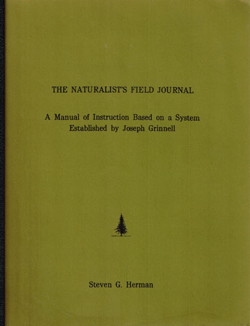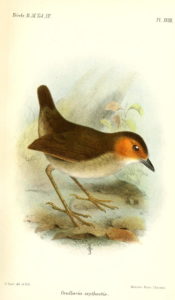The Art and Science of Field Notes
Do you take notes regarding birding trips when you go into the field to bird? They are called field notes. What are field notes anyway and are they really necessary? Most good birders we know do take field notes and there must be a reason for that. There are different kinds of notes about bird trips. One kind is a small spiral bound notebook that usually fits into a shirt or jacket pocket in which we can jot down the date, time at our birding destinations, weather conditions, habitat visited, a list of birds with numbers, perhaps a description of a rare bird taken in the field at the time of the observation and anything else that you believe to be important. And today there are smart phones where you can enter birds as you see them, which certainly can make the numbers at the end of the day more accurate than waiting until dark before estimating how many of each of the species. There are times, unfortunately, when we do not know what is important. One early June in the 1960s, we were birding at the Patagonia Sanctuary in southeastern Arizona and noticed a Sulphur-bellied Flycatcher which we pointed out to the local expert. We were surprised when he got really excited; he had birded the area for many years and had never seen one there. We believed they would be regular because they breed in the nearby mountains. Had the local expert not been here to educate us, we would not have realized the significance of the sighting. We were not taking field notes in those days so we don’t have the actual date or even the year of this memorable event.
 There are other types of written documents that are kept by serious amateurs and professional ornithologists. One of the most important of these is the “journal.” The journal is complete documentation of a birding trip. If done properly, it allows the author of the document or anyone else to read it at a later or much later date, a century perhaps, and have a clear picture of what happened that day. In our research on the birds of Inyo County, we have consulted the journals of early field workers that were here over a hundred years ago. They are on line and are extremely useful. We majored in Zoology at California State University, Long Beach in the 1960s and were first introduced to the “journal” every time we took a class that required field work, such as entomology, mammalogy, herpetology, ornithology etc. The system we used was called the Grinnell approach. Joseph Grinnell was the founder of the Museum of Vertebrate Zoology (MVZ) at Berkeley and is considered by many to be the dean of California ornithology. This system of field trip documentation was developed by Grinnell and his students and colleagues over the years and is still widely in use. Much time and effort was spent in laboriously preparing each page to receive the information to be added after a day in the field. Although this system began with pen and paper, it has been easily transferred into the electronic age. Today, with computers, the approach has been greatly simplified but the same information is still needed to paint a verbal picture that describes the important aspects of the day.
There are other types of written documents that are kept by serious amateurs and professional ornithologists. One of the most important of these is the “journal.” The journal is complete documentation of a birding trip. If done properly, it allows the author of the document or anyone else to read it at a later or much later date, a century perhaps, and have a clear picture of what happened that day. In our research on the birds of Inyo County, we have consulted the journals of early field workers that were here over a hundred years ago. They are on line and are extremely useful. We majored in Zoology at California State University, Long Beach in the 1960s and were first introduced to the “journal” every time we took a class that required field work, such as entomology, mammalogy, herpetology, ornithology etc. The system we used was called the Grinnell approach. Joseph Grinnell was the founder of the Museum of Vertebrate Zoology (MVZ) at Berkeley and is considered by many to be the dean of California ornithology. This system of field trip documentation was developed by Grinnell and his students and colleagues over the years and is still widely in use. Much time and effort was spent in laboriously preparing each page to receive the information to be added after a day in the field. Although this system began with pen and paper, it has been easily transferred into the electronic age. Today, with computers, the approach has been greatly simplified but the same information is still needed to paint a verbal picture that describes the important aspects of the day.
Each page has the author’s name and date, including the year at the top left corner. Numbers are not used to indicate the month to avoid confusion such as 2-3-2015 can be interpreted as the third of February or the second of March. “2 MAR 2015” is the preferred format. The account begins with the route followed, the times and distances covered, as well as the names of all observers present. Weather is briefly covered including temperatures, wind direction, and cloud cover. Habitat should be described as well. Water level should be included, if appropriate, along with anything else the author feels might be relevant. “When in doubt, DON”T leave it out!” Then the bird species list follows with the numbers for each species and if they are estimates they should be indicated. Rare birds should be documented, including how similar species were eliminated (i.e., why was it a fall Bay-breasted Warbler and not the very similar Blackpoll or Pine Warbler). Articles have been written in journals on how to keep a personal journal (Remsen, J.V., Jr., American Birds 31(5): 946), in books (Zimmer, Kevin J., 2000), and entire books have been devoted to the topic (Herman, Steven J., 1986). This sounds like a lot of work, but if you decide to try it, the time spent learning how to do it well is worth it. You learn more about birds by writing about them. We didn’t always think that way.

Grallaria erythrotis, Rufous-faced Antpitta
Joseph Smit, 1890
Catalogue of the birds in the British Museum. Volume 15
We had been hearing this species call for a year and could not see it. Tom would imitate the call, the bird would come in closer and closer, calling back until it was able to see us though the dense vegetation. All we could see were the quivering of stems and leaves as it disappeared. We imitated the bird vocalization to visiting birders from Louisiana State University, Dr. J. V. Remsen and Ted Parker, and they agreed it was an antpitta but they could not be certain which one. On the day of our finally seeing the bird, we had just returned from a birding walk and Dr. Remsen had found the bird while we were gone and identified it. He told us that we were not going to see it by staying on the trail or what was left of an old overgrown road we often used. He said we would have to get down on the ground and crawl into the forest understory, find a place with a little visibility and sit, imitate the call, and hope for the best. We followed his directions and once seated Tom whistled. A bird immediately answered from afar and began his hunt for the intruder. Closer and closer the calls came. Jo spotted it first about three feet from her but Tom was blocked from seeing it. The bird immediately melted away. Our experience in the past was that once the bird saw us, it was gone. In an effort to save his marriage, Tom crawled back to the old road, ran about 50 feet up the hill, dove back into the understory, found a clear spot with a small rock on the other side, and whistled the call. Within seconds a Rufous-faced Antpitta jumped up on the small rock, threw its head back, gave the three note vocalization, and disappeared. We hoped to always remember most of the details of this event, but to write this story for the WAVE, we had to consult our journal for some of the details written 36 years ago. The time it took to write the story in our journal later that afternoon was miniscule to the joy of reliving, in detail, that amazing event these many decades later.
Two other types of documentation that advanced birders and field ornithologists keep are the Species Accounts and the Catalog. Species accounts are pages with the name of a species at the top of a page and the only thing entered on that page is about that species. Entries may just be that the species was encountered at a certain location on a certain day in a certain habitat, or that certain behavior was noted, or that a sex ratio was 1:1, or whatever else might be judged noteworthy. The third type of documentation is called the Catalog. This is a list of biological materials that are turned over to a museum or university and preserved for future study. Examples might be a dead bird, scat, plant material etc. Most birders do not maintain a Catalog or a Species Account, but most serious birders do keep a journal.
Some birders feel that keeping a list on eBird is all that is necessary. The list is a small but important part of a journal. eBird is a great way to keep a list, actually a database, but typically falls well short of painting an entire picture of what happened, including the details, in the field that day. The birds we observe on any given day are the result of weather conditions, wind patterns, the season, and many other aspects that the journal might explain. Herman (1986:200) states “NO JOURNAL THIS DAY, NO SLEEP THIS NIGHT” and his students amended it to “NO GRINNELL THIS NIGHT, NO GRANOLA TOMORROW.”
We know this may sound like a major effort. It is not. It will become a habit, actually an addictive one, and we are thrilled that we crossed paths with those who were taught the value of and then the how-to maintain a journal and shared those lessons with us. So are the other birders who have done likewise. We can’t tell you how often we consult the journals we have kept over the decades and how often they have helped us answer questions that we couldn’t remember the answers to or confused the events, dates, locations, etc. If you live full lives and are lucky enough to live long enough…you will have filled up your personal RAM and your ancient OS won’t be able to SORT as quickly or as accurately as it used to. But those journals, of the days when you wore a younger person’s clothes, will fill all the gaps you so carefully tried to recreate. And then, if you are wise enough to insure they exist in perpetuity, you should consider housing your journals in a university, museum, library, etc. where they will be available to answer the questions of those who follow us…”What was it really like, waaaay back then?”
References
- Herman, S. G. 1986. The Naturalist’s Field Journal. Buteo Books. Vermillion, SD
- Remsen, J. V. Jr. 1977. American Birds 31(5):946
- Zimmer, K. J. 2000. Birding in the American West. Cornell Univ. Press. Ithaca, NY

